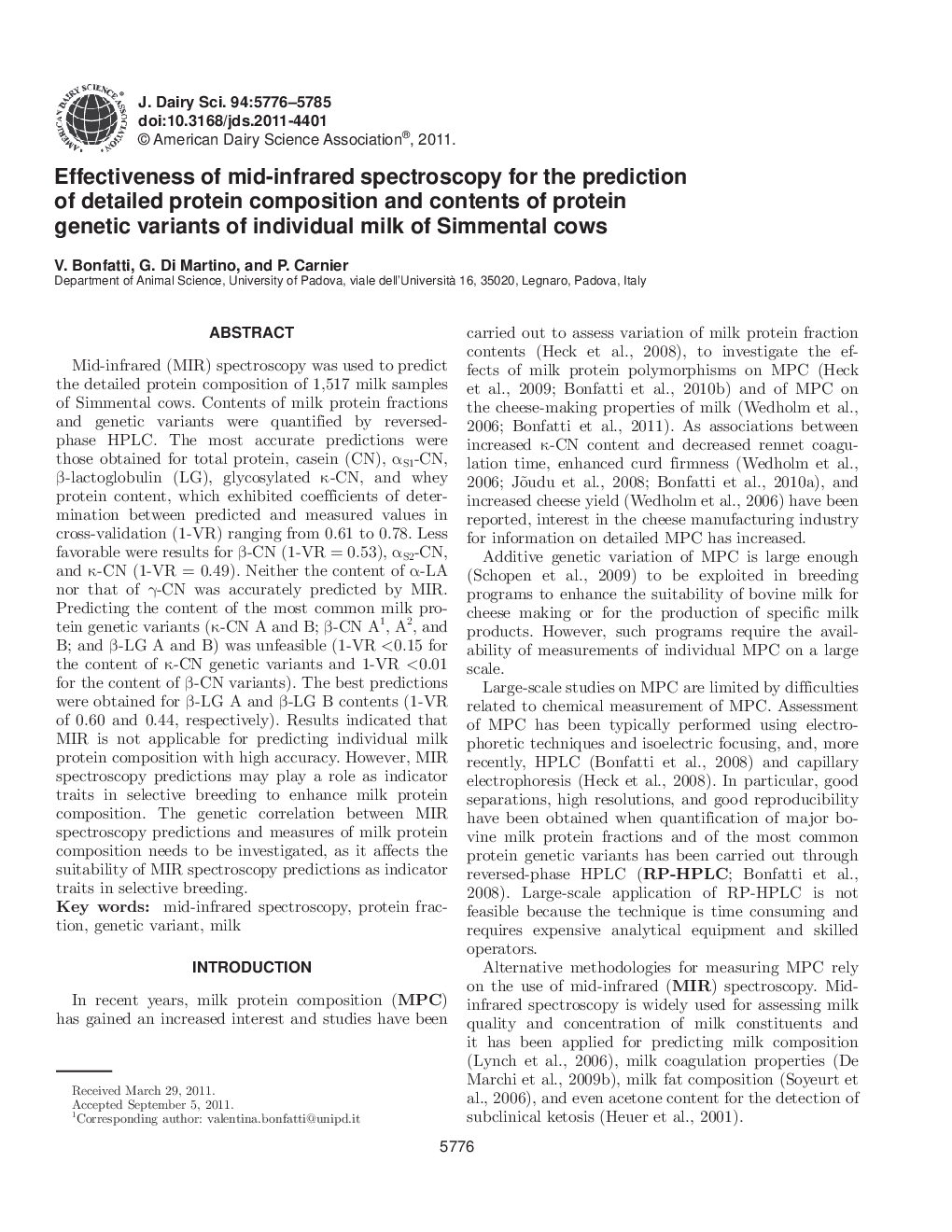| Article ID | Journal | Published Year | Pages | File Type |
|---|---|---|---|---|
| 10981627 | Journal of Dairy Science | 2011 | 10 Pages |
Abstract
Mid-infrared (MIR) spectroscopy was used to predict the detailed protein composition of 1,517 milk samples of Simmental cows. Contents of milk protein fractions and genetic variants were quantified by reversed-phase HPLC. The most accurate predictions were those obtained for total protein, casein (CN), αS1-CN, β-lactoglobulin (LG), glycosylated κ-CN, and whey protein content, which exhibited coefficients of determination between predicted and measured values in cross-validation (1-VR) ranging from 0.61 to 0.78. Less favorable were results for β-CN (1-VR = 0.53), αS2-CN, and κ-CN (1-VR = 0.49). Neither the content of α-LA nor that of γ-CN was accurately predicted by MIR. Predicting the content of the most common milk protein genetic variants (κ-CN A and B; β-CN A1, A2, and B; and β-LG A and B) was unfeasible (1-VR <0.15 for the content of κ-CN genetic variants and 1-VR <0.01 for the content of β-CN variants). The best predictions were obtained for β-LG A and β-LG B contents (1-VR of 0.60 and 0.44, respectively). Results indicated that MIR is not applicable for predicting individual milk protein composition with high accuracy. However, MIR spectroscopy predictions may play a role as indicator traits in selective breeding to enhance milk protein composition. The genetic correlation between MIR spectroscopy predictions and measures of milk protein composition needs to be investigated, as it affects the suitability of MIR spectroscopy predictions as indicator traits in selective breeding.
Related Topics
Life Sciences
Agricultural and Biological Sciences
Animal Science and Zoology
Authors
V. Bonfatti, G. Di Martino, P. Carnier,
